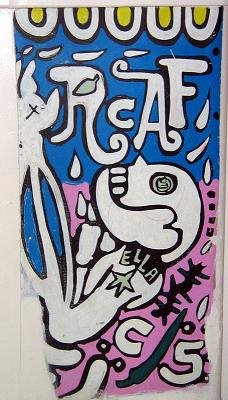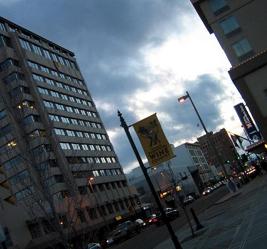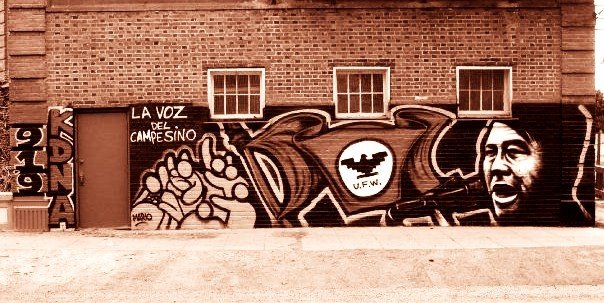Undocumented women who are feeding the country with their labor routinely endure sexual harassment, wage theft and other abuses, according to a new report released today by the Southern Poverty Law Center (SPLC).
The report — Injustice on Our Plates: Immigrant Women in the U.S. Food Industry — documents the workplace experiences of immigrant women who have come to the United States to escape crushing poverty. It describes how the laws that are in place to protect them from exploitation are grossly inadequate and how they are typically powerless to protect themselves.
The report's release coincides with the 50th anniversary of Edward R. Murrow’s documentary “Harvest of Shame,” which chronicled the plight of migrant farmworkers. CBS broadcast the documentary on Thanksgiving in 1960.
“These women are the backbone of the food industry but are exploited and abused in ways that most of us can’t imagine and that none of us should tolerate,” said SPLC Legal Director Mary Bauer, co-author of the report. “Fear keeps these women silent, so their suffering is invisible to all of us who benefit from their labor every time we sit down at the dinner table.”
The report is based on extensive interviews with 150 immigrant women from Mexico, Guatemala, and other Latin American countries. They live and work in states across the country. All have worked in the fields or factories that produce food for America.
Many of the women interviewed for the report said the threat of deportation and the possible destruction of their families keeps them from reporting workplace abuses — even when it means enduring sexual harassment and other indignities.
“It’s because of fear [that] we have to tolerate more,” said one 26-year-old Florida farmworker interviewed for the report. “Sometimes they take advantage because we don’t have papers. They mistreat us, and what can we do? Where would we go?”
Many workers described keeping track of the wages they had earned only to discover a far smaller amount in their paychecks. Some said they were not paid at all for work they performed. Sexual harassment and even brutal sexual assaults by male co-workers and supervisors were also a constant threat for many of these women. Some saw it as a danger that simply must be tolerated for a day’s pay. Many are reluctant to report sexual assaults and other crimes to police for fear of being deported.
The women also reported working in dangerous conditions without adequate safety precautions. Field workers reported frequent exposure to chemicals and pesticides.
Farmworkers remain the least protected workers in America. They were intentionally excluded from nearly all major federal labor laws passed during the New Deal era. Though some laws have been amended since then, many exemptions remain. They are not entitled to overtime pay under federal law, for example. On smaller farms and in short harvest seasons, they are not even entitled to the federal minimum wage. In addition, farmworkers are not covered by workers’ compensation laws in many states and are excluded from many state health and safety laws.
The report concludes that wholesale reforms at the federal level are needed to protect these workers. These reforms include a path to citizenship for the undocumented workers who are feeding the country with their labor. Reforms also must include stronger worker protections — for all workers, whether they labor in the field or in the factory, and whether they have legal status or not.
“For these women, workplace exploitation is the rule — not the exception,” said Mónica Ramírez, coauthor of the report and director for Esperanza: The Immigrant Women’s Legal Initiative of the SPLC. “Virtually every American relies on their labor. It is our responsibility to stop their abuse.”
Facts About Immigrant Women Working in the U.S. Food Industry
Undocumented women are among the most vulnerable workers in our society today. They fill the lowest paying jobs in our economy and provided the backbreaking labor that helps bring food to our tables. Yet they are routinely cheated out of wages and subjected to an array of other abuses in the workplace. They are generally powerless to enforce their rights or protect themselves. The following are facts from the SPLC report Injustice on Our Plates.
Undocumented Immigrants
- There are an estimated 4.1 million undocumented women in the U.S. today. In addition, 4 million U.S.-born children — citizens by birthright — live in a household with at least one undocumented parent.1
- Undocumented women typically earn minimum wage or less, get no sick or vacation days, and receive no health insurance.
- Legalizing undocumented workers would raise the U.S. gross domestic product by $1.5 trillion over a decade. On the other hand, if the government were to deport all 10.8 million undocumented immigrants living on U.S. soil, our economy would decline by $2.6 trillion over a decade, not including the massive cost of such an endeavor.2
- Each year, undocumented immigrants contribute as much as $1.5 billion to the Medicare system and $7 billion to the Social Security system, even though they will never be able to collect benefits upon retirement.3
Farmworkers
- There are an estimated 3 million migrant and seasonal farmworkers employed in the United States.4 The federal government estimates that 60 percent of farmworkers are undocumented immigrants; farmworker advocates say the percentage is far higher.
- The National Agricultural Workers Survey (NAWS) published by the Department of Labor reports that about 22% of the farmworker population is female. Thus, there are an estimated 630,000 women engaged in farm work in the United States.5
- The average personal income of female crop workers is $11,250, compared to $16,250 for male crop workers.6
- A mere 8 percent of farmworkers report being covered by employer-provided health insurance, a rate that dropped to 5 percent for farmworkers who are employed seasonally and not year-round.7
- According to the U.S. Department of Labor, farmworkers suffer from higher rates of toxic chemical injuries and skin disorders than any other workers in the country.8 The children of migrant farmworkers, also, have higher rates of pesticide exposure than the general public.9
- Each year, there are an estimated 10,000 to 20,000 cases of physician-diagnosed pesticide poisoning among U.S. farmworkers, according to the U.S. Environmental Protection Agency.10
- Farmworkers are not covered by workers’ compensation laws in many states. They are not entitled to overtime pay under federal law. On smaller farms and in short harvest seasons, they are not entitled to the federal minimum wage.11 They are excluded from many state health and safety laws.12
- Because of special exemptions for agriculture, children as young as 10 may work in the fields. Also, many states exempt farmworker children from compulsory education laws.
Poultry Workers
- Almost a quarter of the workers who butcher and process meat, poultry and fish are undocumented.13
- At least half of the 250,00014 laborers in 174 of the major U.S. chicken factories are Latino and more than half are women.15
- Working in a chicken factory is one of the most dangerous occupations in America. Line workers endure a frigid and wet work environment, without adequate bathroom breaks, while being exposed to numerous hazards handling chicken on hangers that whiz by a rate of hundreds per minute. The Occupational Safety and Health Administration has not enacted any regulation to limit the speed at which poultry and meat processing lines operate — despite the appallingly high rates of injury directly attributable to the line speed. In the decade ending in 2008, 100 poultry workers died in the U.S., and 300,000 were injured, many suffering the loss of a limb or debilitating repetitive motion injuries.16
- The U.S. Department of Labor surveyed 51 poultry processing plants and found 100% had violated labor laws by not paying employees for all hours worked. Also, one-third took impermissible deductions from workers’ pay.17
Sexual Abuse On the Job
- In a recent study of 150 women of Mexican descent working in the fields in California’s Central Valley, 80% said they had experienced sexual harassment.18 That compares to roughly half of all women in the U.S. workforce who say they have experienced at least one incident.
- While investigating the sexual harassment of California farmworker women in the mid-1990s, the U.S. Equal Employment Opportunity Commission found that “hundreds, if not thousands, of women had to have sex with supervisors to get or keep jobs and/or put up with a constant barrage of grabbing and touching and propositions for sex by supervisors.”19
- A 1989 article in Florida indicates that sexual harassment against farmworker women was so pervasive that women referred to the fields as the “green motel.”20 Similarly, the EEOC reports that women in California refer to the fields as “fil de calzon,” or the fields of panties, because sexual harassment is so widespread.21
- Due to the many obstacles that confront farmworker women — including fear, shame, lack of information about their rights, lack of available resources to help them, poverty, cultural and/or social pressures, language access and, for some, their status as undocumented immigrants — few farmworker women ever come forward to seek justice for the sexual harassment and assault that they have suffered.22
- In interviews for this report, virtually all women reported that sexual violence in the workplace is a serious problem.
1 Jeffrey S. Passel and D’Vera Cohn, “A Portrait of Unauthorized Immigrants in the United States,” Pew Hispanic Center, April 14, 2009.
2 Raúl Hinojosa-Ojeda, “Raising the Floor for American Workers,” Center for American Progress and Immigration Policy Center, American Immigration Council, January 2010.
3 Eduardo Porter, “Illegal Immigrants Are Bolstering Social Security with Billions,” The New York Times, April 5, 2005.
4 National Center for Farmworker Health, “Facts About Farmworkers,” Found at http://www.ncfh.org/docs/fs-Facts%20about%20Farmworkers.pdf. Last visited Nov. 12, 2010.
5 U.S. Department of Labor, “National Agricultural Worker Survey,” Published March 2005, Found athttp://www.doleta.gov/agworker/report9/naws_rpt9.pdf, 9. Last visited March 15, 2007.
6 Analysis of public access data from the National Agricultural Workers Survey for FY 2004-2006, Office of Policy Development and Research, Employment and Training Administration, U.S. Department of Labor.
7 National Center for Farmworker Health, Inc., “Migrant and Seasonal Farmworker Demographics,” 2009, at 3.
8 The National Agricultural Workers Survey, United States Department of Labor, 2005.www.doleta.gov/agworker/naws.cfm.
9 Maternal & Child Health Fact Sheet, National Center for Farm Worker Health, 2009, www.ncfh.org/docs/fs-MATERNAL%20FACT%20SHEET.pdf.
10 J. Routt Reigart and James R. Roberts, “Recognition and Management of Pesticide Poisonings,” Office of Pesticide Programs, U.S. Environmental Protection Agency, Fifth Edition, 1999.
11 Also, in most Southern states, either there is no state minimum wage or farmworkers are expressly excluded from coverage.
12 See, e.g., Ala. Code § 25-1-1; Ark. Code Ann. § 11-2-101; O.C.G.A. (Georgia) §§ 34-2-2, 34-2-10; La. R.S. § 23.13.
13 Jeffrey S. Passel, “Unauthorized Migrants: Numbers and Characteristics,” Pew Hispanic Center, June 14, 2005, and Jeffrey S. Passel and D’Vera Cohn “A Portrait of Unauthorized Immigrants in the United States,” Pew Hispanic Center, April 14, 2009.
14 William G. Whittaker, “Labor Practices in the Meat Packing and Poultry Processing Industry: An Overview,” Congressional Research Service, July 20, 2005, www.nationalaglawcenter.org/assets/crs/RL33002.pdf, accessed October 5, 2010, citing Industrial Safety & Hygiene News, July 2002, 14.
15 “Injury and Injustice — America’s Poultry Industry,” United Food and Commercial Workers International Union,www.ufcw.org/press_room/fact_sheets_and_ backgrounder/ poultryindustry_.cfm, accessed October 5, 2010.
16 “Hazards and Disorders of Poultry Processing, U.S. Occupational and Safety Health Administration presentation,”www.osha.gov/SLTC/ergonomics/powerpoint/chicken/index.html.
17 “U.S. Department of Labor Poultry Processing Compliance Survey Fact Sheet,” U.S. Department of Labor, January 2001, http://www.ufcw.org/docUploads/ Usdept~1.pdf?CFID=5119829&CFTOKEN=98920065.
18 Irma Morales Waugh, “Examining the Sexual Harassment Experiences of Mexican Immigrant Farmworking Women,”Violence Against Women, January 2010, 11.
19 Maria Ontiveros. “Lessons From the Fields: Female Farmworkers and the Law,” 55 ME. L. Rev. 157, 169. (2003).
20 Margo Harakas. “Tales of the Green Motel.” The Sun-Sentinel, February 12, 1989.
21 Rebecca Clarren. “The Green Motel,” Ms., Summer 2005, at 42; See also Ontiveros at 169.
22 Mónica Ramírez and Mike Meuter. The Holistic Representation Model: A Best Practices Manual for Representing Farmworker Women Who Have Been Sexually Harassed, Southern Poverty Law Center, 2nd Edition Published November 2008.































.jpg)
.jpg)






.jpg)
